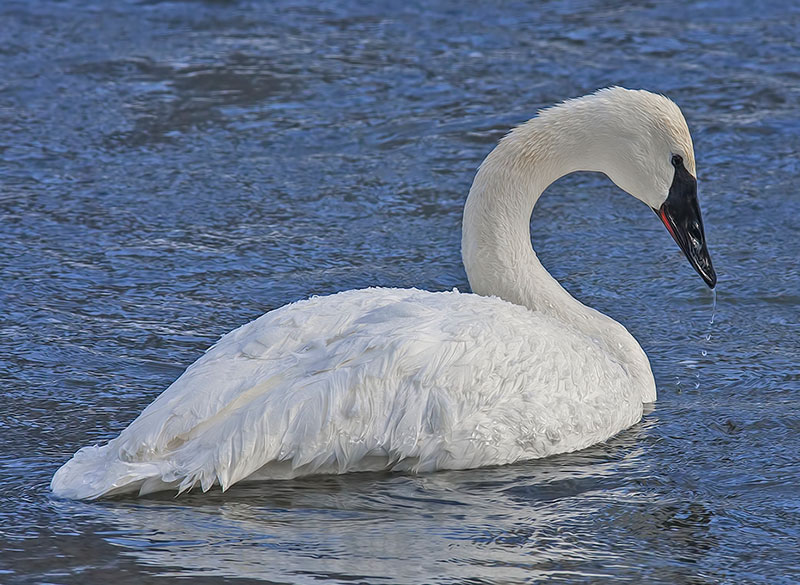
Four swan species are found in the United States. In this article, we will focus on three of them. The fourth, Whooper Swan, rarely finds itself in North America. They are considered to be the Eurasian counterparts of Trumpeter Swans.
In the United States, Mute Swans dominate the field. Along with them, common North American species include Trumpeter Swans and Tundra Swans.
Tundra Swan
With its high arctic breeding range, the Tundra Swan undertakes long migrations in family groups, which may travel by both day and night. Tundra Swan pairs maintain territories during the breeding season and keep the same territories from one year to the next. Displays, as well as chases, are used to defend territories.
Young Tundra Swans remain with their parents during their first southward migration and first winter but leave them at some point during spring migration. The oldest known wild Tundra Swan was over 21 years old.
The Tundra Swan is a large swan with all white plumage and a black bill. The black facial skin above its bill cuts straight across the forehead.
Juveniles are grayish. Generally paler than the Trumpeter. Juveniles have pinkish bills, which become lighter at the end of the first summer, and the bill darker.
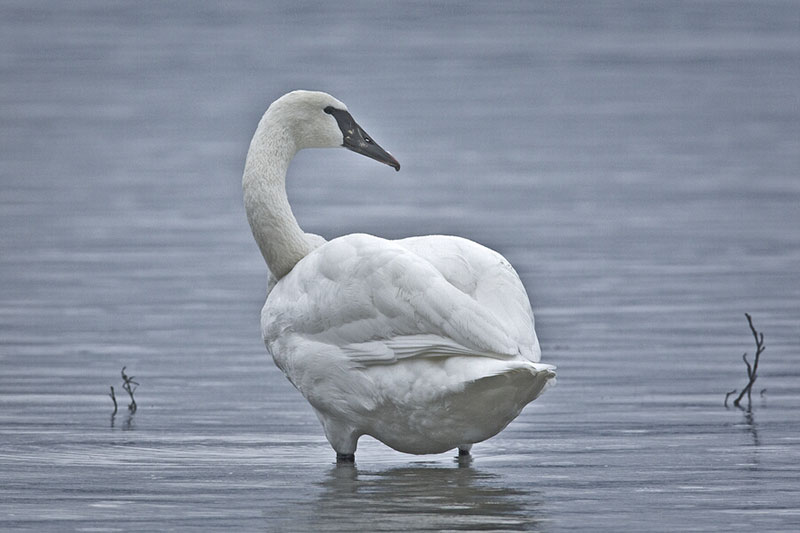
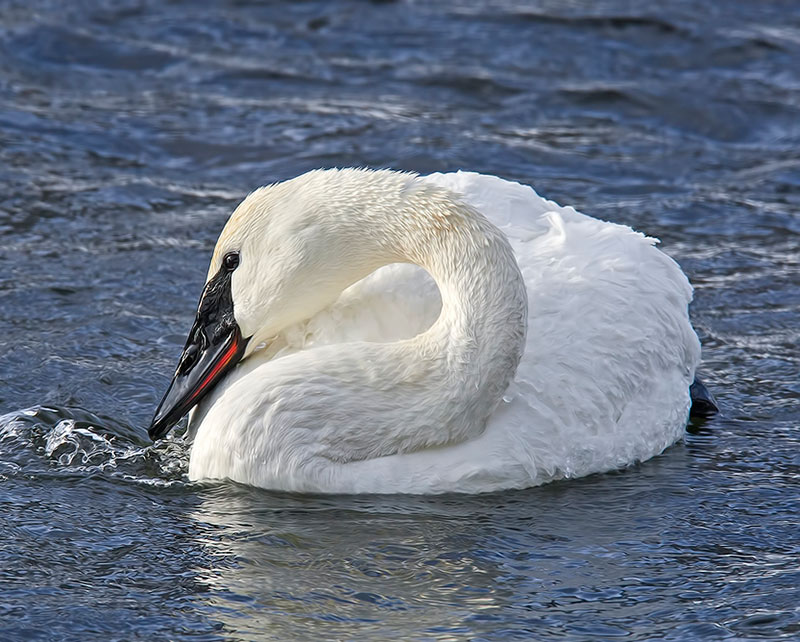
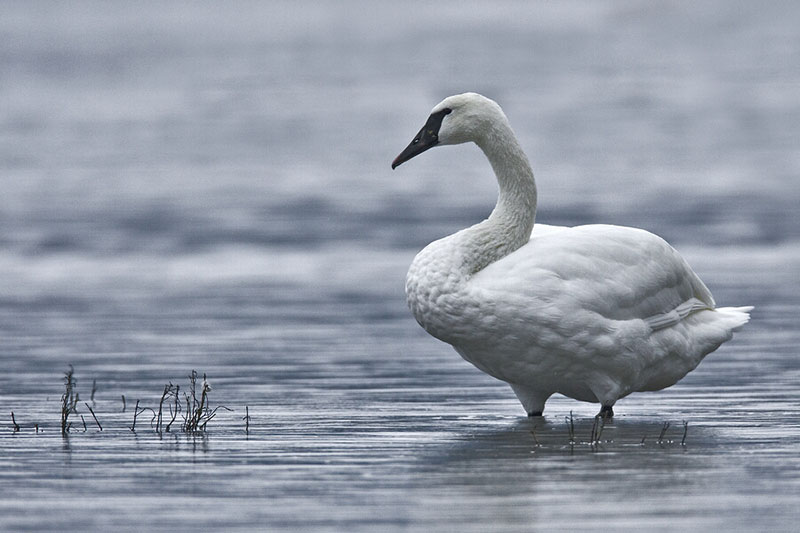
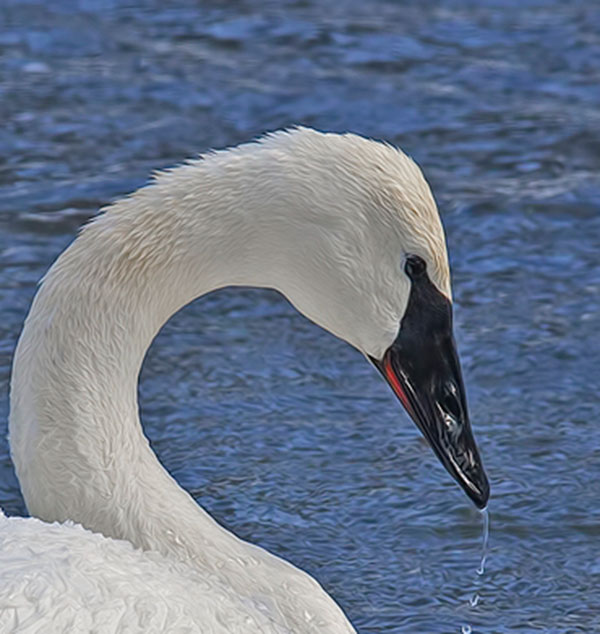
This swan with yellow on its bill (below) is the “Bewick’s subspecies,” rare in the U.S. The Whistling Swan (American subspecies) is similar, but the bill and forehead form a smooth line. The bill on this swan has a gentle curve and more black than the typical Whooper Swan.
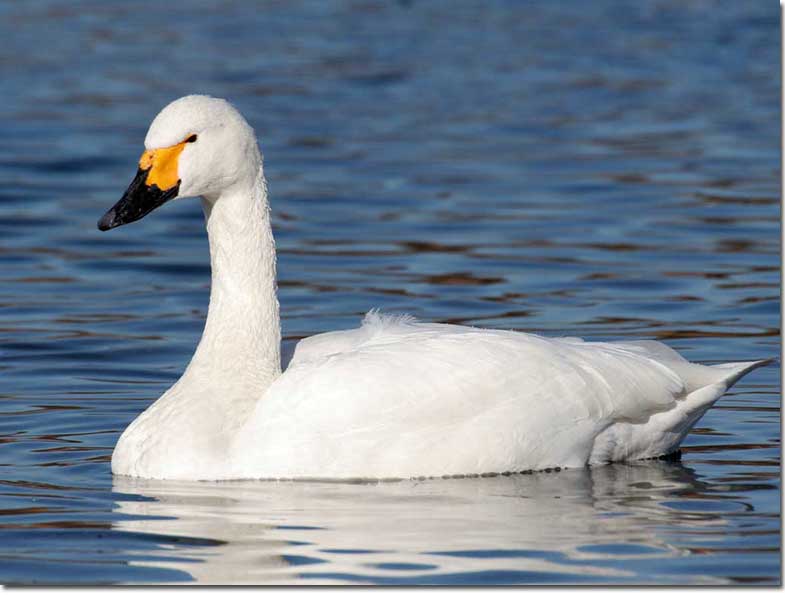
Photograph © Mega Chan
Trumpeter Swan
The largest of North America’s native swans, the Trumpeter Swan, at one time had a critically small population, although conservation and reintroduction efforts are proving successful. Trumpeter Swans hatching in Upper Midwest reintroduction programs often winter in south-central states.
Trumpeter Swans don’t typically breed until 4-7 years of age but usually breed every year once they start. Collisions with power lines and fences are frequently reported, but Trumpeter Swans can be long-lived, with the oldest known wild bird living over 24 years.
The Trumpeter Swan is a large swan with all-white plumage and a black bill. The black facial skin above its bill forms a V on its forehead.
Juveniles are grayish. Bills are black at the base. Darker than juvenile Tundra.
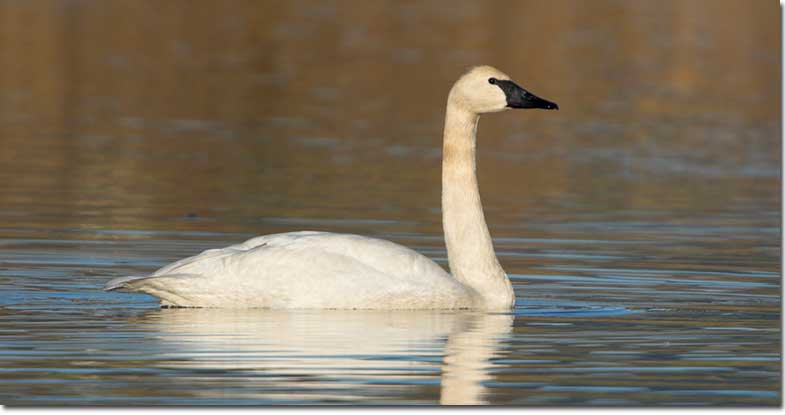
Photograph © Glenn Bartley
Trumpeter Swans look more similar to Tundra Swans, rather than Mute Swans.
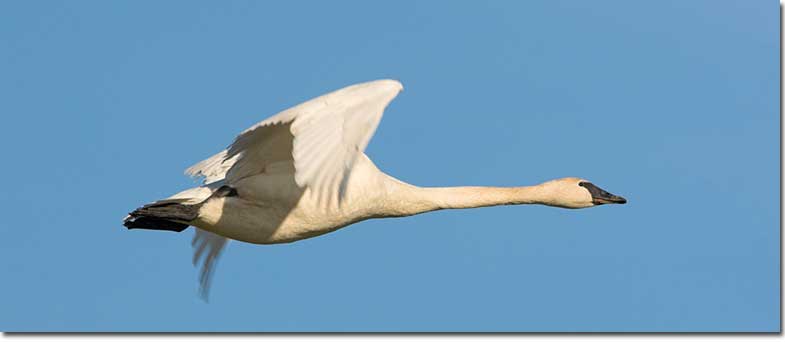
Photograph © Glenn Bartley
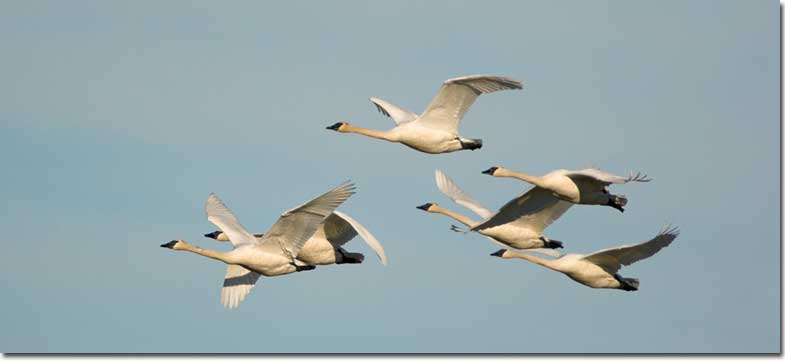
Photograph © Glenn Bartley
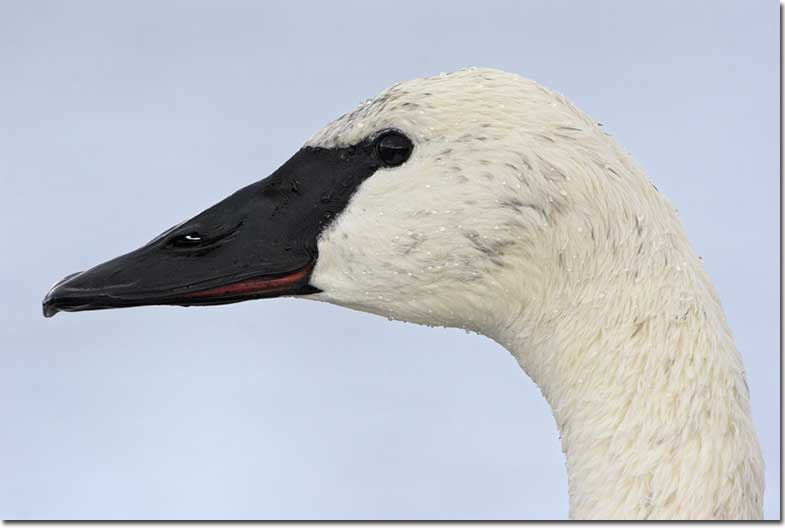
Photograph © Glenn Bartley
Mute Swan
Not native to North America, the Mute Swan has been introduced in various places and is most common on parts of the Atlantic Coast and the Great Lakes. Large and occasionally aggressive, Mute Swans can damage aquatic vegetation through overgrazing and can displace native waterfowl species.
Predation on Mute Swans is usually restricted to eggs or recently hatched young because the adults are too large for most predators. Mute Swans usually begin nesting at age two or three, and they breed each year thereafter. The oldest known Mute Swan in North America lived over 26 years.
The Mute Swan is very large and all-white, with a reddish bill and a black knob at the base of the bill.
Sexes are similar, but females can be told apart by slimmer necks.
Juveniles are mostly gray and have dark bills.
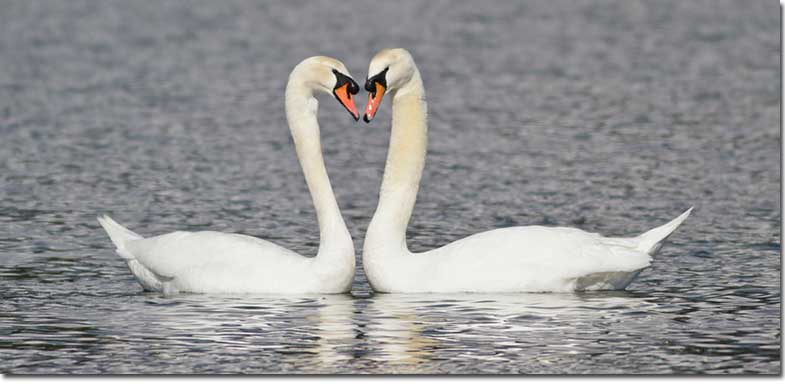
Photograph © Glenn Bartley
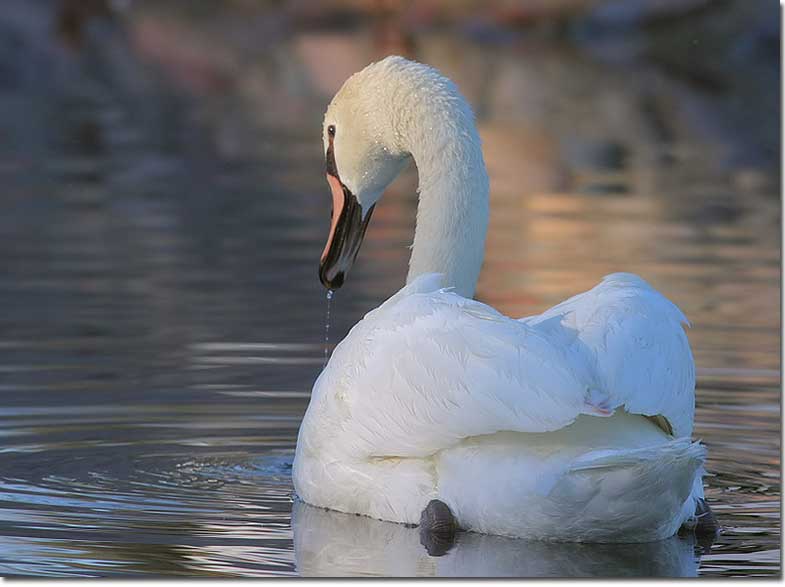
Photograph © Steve Wolfe
How To Tell North American Swan Species Apart?
The first, and often most definitive way to tell different swan species apart is by their bills. Mute Swans have a distinctive hump on their bills, along with some pinkish coloration. Tundra Swans and Trumpeter Swans have similar beaks, so take a look at their face. Does the spot where their face meets the bill look sharp or slightly softer?
In Trumpeter Swans, this area is v-shaped, while Tundra Swans have a u-shaped transition.
Looking at their necks might help you out too – Mute Swans hold their necks curved, other species hold their straighter, and sometimes completely straight.
When it comes to size, Tundra Swans are the smallest. Mute Swans and Trumpeter Swans are larger, with Trumpeters being slightly bigger.

